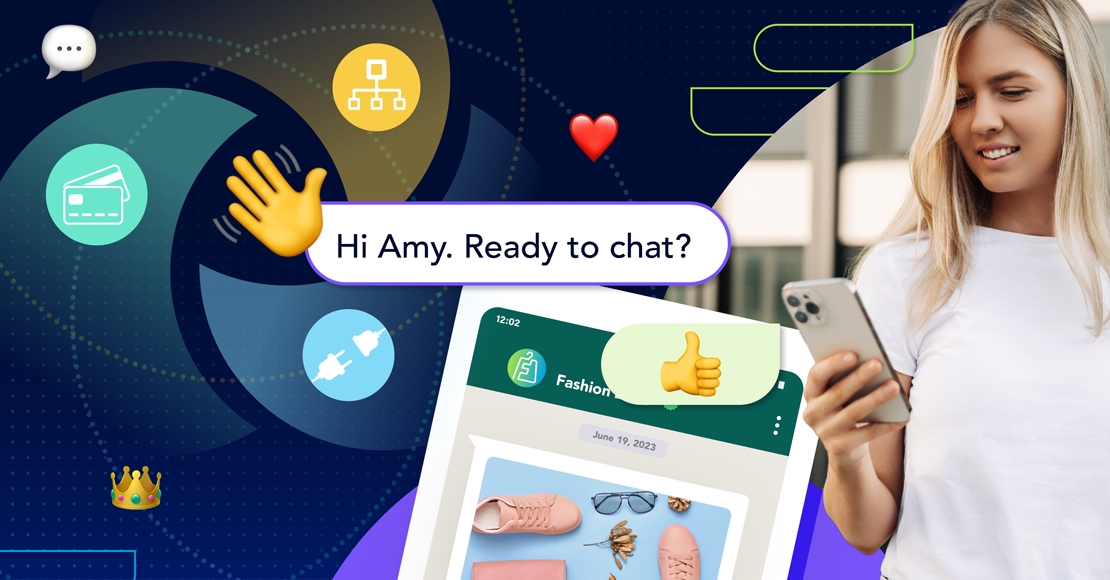
There are many different ways to connect with a brand. From physically going to a retail store, phoning them or interacting with their social media accounts, to visiting their website, and many more. What’s important in omnichannel marketing is that every digital touchpoint provides the same experience.
There’s a debate going on in the digital retail space that omnichannel as a term is dead. Instead of using the word, which customers don’t understand, it’s being said that customers should simply be able to engage with a retailer in whichever manner they’d prefer to engage. Retailers shouldn’t concentrate on the term itself, but rather on what it actually means.
What’s not being doubted is the importance of creating a seamless, frictionless customer experience. And that’s what omnichannel is all about.
What is omnichannel?
Omnichannel marketing is all about creating a cohesive and integrated experience for users. Each individual digital touchpoint is created to be a step in the customer journey. Each touchpoint is well-rounded as its own individual entity and delivers a connected customer experience which is clearly part of a broader brand experience.
It’s a common sight to see someone browsing a store’s website while standing in-store. If what they see online doesn't match what’s physically in front of them, they might just look elsewhere. It would be easy for them to begin searching for stock availability and pricing on a competitor’s website. It’s this kind of willingness on the customer’s part to jump to another brand which makes omnichannel so important.
Why is it important for businesses to embrace omnichannel marketing?
Simply put, it’s important for businesses to embrace omnichannel marketing because customers demand it. They want to know that, irrespective of how they interact with a brand, the experience will be the same. Customers want to visit a website, then the app on their mobile device, and later that week have a look at the brand’s social media profile. They want everything they see to be consistent. The same branding, the same visuals, and, importantly, the same products.
Businesses making use of an omnichannel strategy that works enjoy improved efficiency, a more personalized customer experience, and improved marketing. You'll be able to respond to customers speedily, offering them the products or services they'd appreciate. And this type of efficient customer experience leads to return customers and better engagement.
Who’s getting omnichannel right?
Mention omnichannel marketing success stories to anyone closely involved in the digital industry and there’s little doubt that they’ll mention Disney Parks. Their website allows you to seamlessly book and plan your trip, and once there, you’re able to do everything you need to with a magical swipe of the band around your wrist.
Another example of omnichannel done right is outdoor goods retailer REI. Its multiple shopping channels – website, app, and in-store – work together seamlessly. There’s no chance that you could find something in store only to browse the website and not see it listed there. They’ve made it simple to find up-to-date and accurate product information at every touchpoint. It’s this type of consistent merchandising which creates loyal customers.
Who’s getting it wrong?
A PwC study found that retailers struggle with legacy systems and tough-to-integrate software. In fact, a massive 40 percent of retail respondents which struggled with omnichannel blamed their systems and software. Retailers need to be agile in their acceptance of this new methodology and way of shopping. Otherwise, they’ll be left behind, with their customers and their credit cards leaving them in their wake.
Large retailers like Target, Kohl’s, JCPenney and Sears had all been struggling in recent years. Their large inventories failed in the online space as stock was not consistent across channels. It was also often found that while the website noted there was stock in-store, when the customer went to the store, there wasn’t any or sufficient stock. It had also been noted that pricing was inconsistent across channels for these retailers. But these stores have seemingly managed to turn the situation around, with some being cited as omnichannel success stories in recent months.
There’s no doubt that there is massive potential for the retailers choosing to embrace an omnichannel future for their businesses. If you’d like to read more about how to create the ideal customer experience by making use of omnichannel tactics and strategies, read our recent article.
Explore other articles
Step into the future of business messaging.
SMS and two-way channels, automation, call center integration, payments - do it all with Clickatell's Chat Commerce platform.








